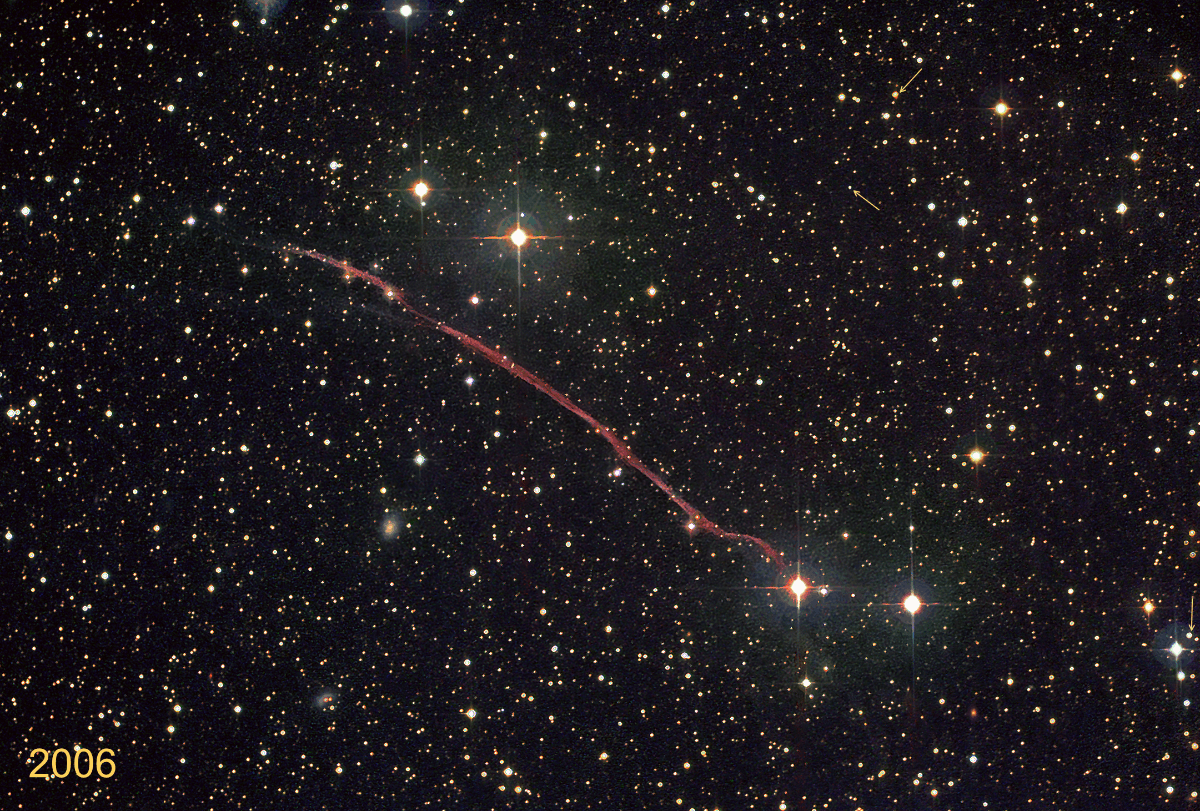
[back] SN 1006 R (PKS 1459-41, SNR G327.6+14.6) in Lupus [NED]
Higher resolved image /
höher aufgelöstes Bild (9417 x 6223 pixel)
High resolved Ha-Versionolved image /
Hoch aufgelößte Ha-Version (9417 x 6223 pixel)
Annotated version /
Annotierte Version (9417 x 6223 pixel)

|
5' |
|
(c) 2025 All astro photo images are copyrighted. They may not be used or reproduced without explicit written permission from the authors.
About this Image / Über dieses Bild
| Camera: | Moravian C3-PRO-61000 Mono CMOS |
| Image Type, Orientation: | RGB-HaOIII Color Composite, North is at 12:00 |
| Exposure time: | RGB: 69/28/28 x 300s, SII: 40 x 900s, Ha: 86 x 900s, OIII: 40 x 900s (51:55h total) |
| Exposure date: | May 6th, 2025.. July 21st, 2025 |
| Location: | Capella Observatory South at Kiripotib Astro Farm, Namibia |
| Filter: | Astronomik Deep-Sky Deep-Sky RGB Filter plus 6nm SII, Ha, OIII filters on Moravian EFW-3L-9-II External Filter Wheel |
| Instrument: | "Rhea", a PlaneWave DeltaRho 350, 1050mm focal length, 350mm aperture, f/3 on 10Micron GM2000 HPS II Combi |
| Photographer: | Rainer Raupach, Josef Pöpsel, Frank Sackenheim, Stefan Binnewies |
| Remarks: |
SN 1006 was a
supernova observed beginning on April 30, 1006, in the constellation Lupus.
It is likely the brightest supernova event ever recorded in human history.
As a Type Ia supernova—whose absolute luminosity is well understood—its peak
apparent magnitude has been estimated at approximately –7.5, based on a
distance of roughly 7,000 light-years. This would have made it nearly ten
times brighter than Venus at its peak. A comparison
with the 2006 image from Ganymed
shows a clear displacement of the bright northwestern filament, consistent
with the expected expansion of the shock front (see animation below). The
measured displacement is approximately 5.8 arcseconds, which translates to a
physical distance of about 0.2 light-years at the known distance of ~7,000
light-years. Given the ~19-year interval between the two observations, this
implies a shock front velocity of approximately 3,000 km/s, or about 1% of
the speed of light. However, based on the current radius of the shock
front—about 15 arcminutes, corresponding to roughly 30 light-years—the
average expansion speed since the year 1006 must have been significantly
higher, approximately 9,000 km/s, or around 3% of the speed of light. This
indicates a marked deceleration over the past millennium. |
| Bemerkungen: |
SN 1006 war eine Supernova, die
ab dem 30. April 1006 im Sternbild Wolf beobachtet wurde und wahrscheinlich
das hellste, historisch dokumentierte Ereignis dieser Art war. Da es sich um
eine Supernova vom Typ Ia handelte, deren absolute Helligkeiten bekannt
sind, kann aufgrund der Entfernung von ungefähr 7000 Lichtjahren das
Helligkeitsmaximum auf -7.5 mag abgeschätzt werden, was die Venus fast einen
Faktor zehn übertrifft. |
Vergleich der Aufnahmen aus 2006 und 2025 / Comparison of the image made in 2006 and the one of 2025

(c) 2025 All astro
photo images are copyrighted. They may not be used or reproduced without
explicit written permission from the authors.
Back to the Supernovae-Remnants Overview / Zurück zur Supernovae-Überreste-Übersichtsseite